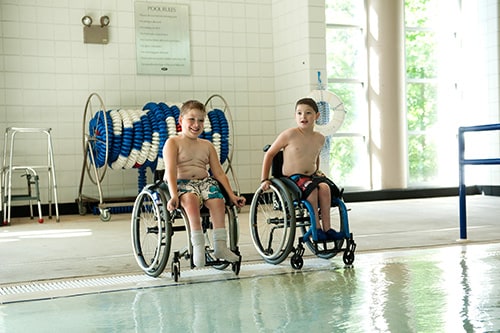Spina Bifida Research & Tracking
CDC uses tracking and research to identify causes of birth defects, find opportunities to prevent them, and improve the health of those living with birth defects. Understanding the potential causes of birth defects can lead to recommendations, policies, and services to help prevent them.
Read an overview of CDC’s birth defects research and tracking.

National Spina Bifida Patient Registry
CDC manages the National Spina Bifida Patient Registry. Data gathered in the Registry come from children and adults who attend spina bifida clinics. These data document the care they receive and the outcomes of that care. Once analyzed and published, Registry data can lead to improvements in the care and treatment of spina bifida.
Urologic Protocol for Young Children
Children with spina bifida often have problems urinating, which can lead to kidney damage. CDC has worked with experts from across the country to develop a medical protocol that will safely and effectively monitor how well the bladder and kidneys are working in newborns and young children with spina bifida. Correctly monitoring the bladder and kidneys, with medical treatment as needed, may eliminate some or all kidney damage.
Read more about how the urologic protocol helps babies born with spina bifida.
Other Birth Defects Research and Tracking Programs
Centers for Birth Defects Research and Prevention
The Centers for Birth Defects Research and Prevention (CBDRP) are research centers across the nation funded by CDC to understand the causes of birth defects. These research centers conduct two large studies.
- The National Birth Defects Prevention Study (NBDPS) which includes babies born between 1997 and 2011.
- The Birth Defects Study To Evaluate Pregnancy ExposureS (BD-STEPS) which collects data on babies born on or after the beginning of 2014.
The Metropolitan Atlanta Congenital Defects Program (MACDP)
The Metropolitan Atlanta Congenital Defects Program (MACDP) was established in 1967 as the nation’s first system that actively tracks children born with specific birth defects who live in a specific area.
State-Based Tracking Systems
Forty-three states have some level of birth defects tracking programs. CDC funds 14 states to track major birth defects, including spina bifida, using population-based methods. State systems use the data to help direct birth defects prevention activities and refer children affected by birth defects to needed services.
National Birth Defects Prevention Network (NBDPN)
The National Birth Defects Prevention Network (NBDPN) is a group of individuals working at the national, state, and local levels, who are involved in tracking, researching, and preventing birth defects. CDC supports and collaborates with NBDPN.
National Health and Nutrition Examination Survey (NHANES)
The National Health and Nutrition Examination Survey (NHANES) looks at the nutrition and health of adults and children in the United States. CDC uses information from NHANES to look at the amount of folic acid consumed by women of childbearing age.